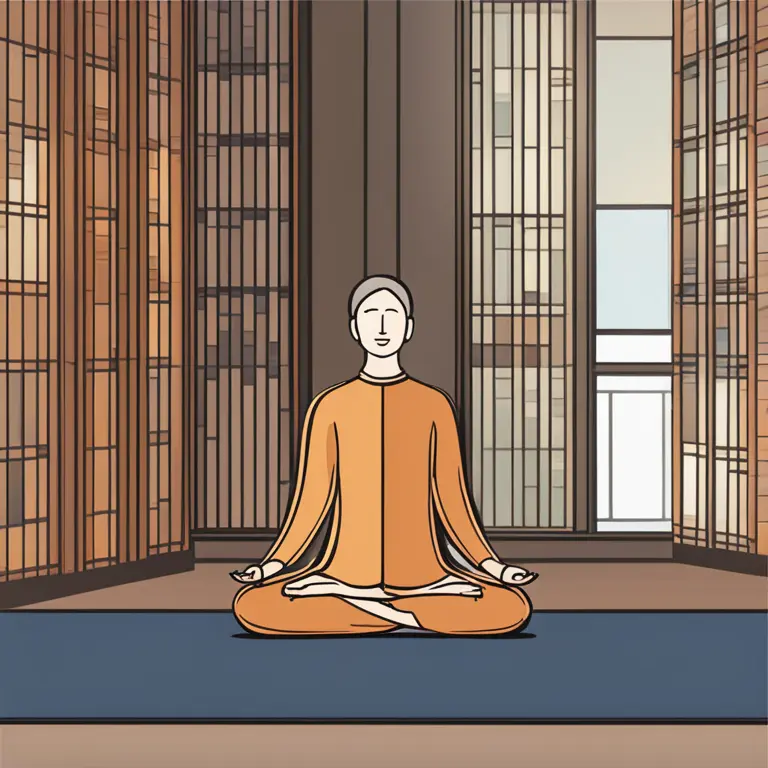
Ease Lower Back Pain with Mindfulness Meditation
Discover how mindfulness meditation practices can alleviate lower back pain and promote well-being through effective relaxation and body awareness techniques.
article by Hina Kurosawa
The Pain-Relief Potential of Mindfulness
Meditation has long been used to promote relaxation and wellness, but its role in pain management is increasingly recognized. Mindfulness meditation, in particular, holds great potential for individuals experiencing lower back pain. By encouraging a present-focused awareness, mindfulness enables individuals to observe their pain without immediate reactive stress, creating a more manageable experience of discomfort. This method also encourages the body’s natural relaxation response, which can alleviate the intensity of the pain.

Understanding Mindfulness in Pain Management
As we enter 2024, with its fast advances in holistic therapies, the understanding of mindfulness has greatly expanded. Unlike other pain management techniques that rely on external interferences, mindfulness meditation trains the brain to alter pain perception. It nurtures a non-judgmental acceptance of bodily sensations, which often reduces the emotional response to pain and the subsequent tension, potentially easing the strain on the lower back muscles.

Getting Started with Mindfulness for Back Pain
Beginning a mindfulness meditation practice for lower back pain doesn’t require special equipment or a vast amount of time. Start with short, daily sessions in a quiet, comfortable place, focusing on the breath and the sensations in your body. Gradually increase the duration as you become more comfortable with the practice. Guided meditations specifically tailored for pain relief can also be an excellent resource for beginners.

The Role of Posture in Mindful Pain Relief
Posture is a significant component in both mindfulness meditation and lower back pain management. Good posture can reduce strain and support the natural curves of the spine. When meditating, use cushions or chairs to maintain alignment and ease into the practice without adding stress to the back. Over time, mindfulness can also increase body awareness, leading to improved posture during daily activities, which may help in preventing further back pain.

Scientific Backing for Meditation and Pain Relief
Recent studies have demonstrated the efficacy of mindfulness meditation in managing chronic pain, including of the lower back. A consistent mindfulness practice has been shown to decrease the need for pain medication, improve physical function, and enhance overall quality of life. As research continues to evolve, it’s clear that incorporating mindfulness into a pain management routine is a substantial, evidence-based approach.
Incorporating Mindfulness into Your Lifestyle
While starting with meditation is beneficial, fully embracing mindfulness throughout daily routines can heighten its positive impact. Activities such as mindful walking, yoga, and even eating can transform routine actions into opportunities for pain relief and stress reduction. By remaining aware and present in each moment, individuals can extend the benefits of mindfulness well beyond their meditation sessions.
Maintaining Consistency in Your Practice
For mindfulness meditation to be truly effective in managing lower back pain, consistency is key. Establishing a regular practice, preferably at the same time each day, helps to develop a routine that the mind and body will come to expect and embrace. Long-term commitment to mindfulness can lead to significant improvements in pain, but also in overall well-being and happiness.
Published: 1/18/2024
Modified: 1/18/2024
More predictions
Come back here soon to learn more about yourself and your future


Mindfulness Meditation: A Path to Lasting Happiness
Discover how mindfulness meditation can enhance your sense of wellbeing and lead you to a happier life in this insightful article.


The Connection Between Meditation & Mindfulness
Discover the relationship between meditation and mindfulness, and how these practices contribute to mental clarity and inner peace.


Mindfulness & Meditation: Enhancing Cognitive Flexibility
Discover how mindfulness meditation can foster cognitive flexibility, improving your ability to adapt to new situations and think creatively.